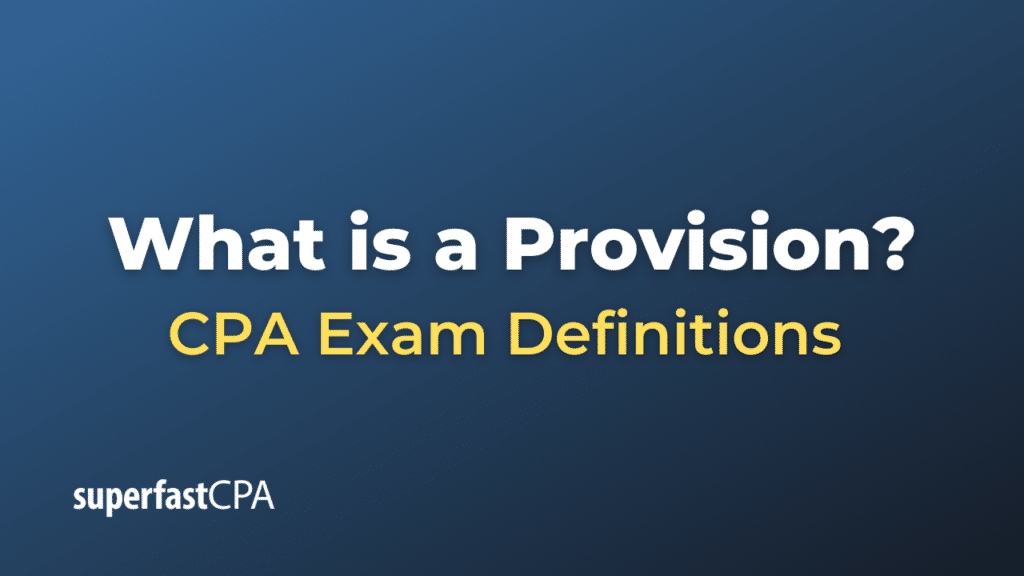Provision
In accounting, a provision is an amount set aside to cover an anticipated future liability, or reduction in the value of an asset. Provisions are essentially estimates of future expenses that a company expects to incur as a result of a past event or transaction.
A provision is made by recording an expense in the company’s income statement, and simultaneously creating a liability in the balance sheet. This process is in line with the principle of conservatism in accounting, which recommends acknowledging expenses and liabilities as soon as they can be estimated, even though the exact amount might not be known until a later date.
Some common examples of provisions include:
- Provision for bad debts: This is an estimation of the amount of a company’s current accounts receivable that is likely to remain unpaid in the future.
- Provision for income taxes: This is a provision made by a company to cover its expected income tax liability for the year.
- Provision for warranties: Many manufacturers offer warranties on their products. When a product is sold, the manufacturer does not know exactly how much the warranty will cost (as it doesn’t know which products, if any, will be returned for repairs), but it can estimate the expense based on historical data.
The amount of a provision can be adjusted in subsequent accounting periods to align with updated estimates. If the actual expense turns out to be higher than the provision, the company will have to increase the provision, which will decrease profits. If the actual expense is less than the provision, the company can release the unused portion of the provision, which will increase profits.
Example of a Provision
Let’s consider an example of a company that manufactures electronic goods and provides a one-year warranty on its products.
- Creating a Provision: The company sold 1,000 units of a product in 2023, each costing $500. Based on its past experience, it expects that 2% of the products will be returned for repairs under the warranty during the next year. The average cost to repair a product under warranty is $50.
So, the company creates a provision for warranties of $1,000 (1,000 units * 2% * $50) in its 2023 financial statements. This is recognized as an expense in the income statement, reducing the company’s profit. At the same time, a liability of $1,000 is created on the balance sheet under ‘provisions. - Using and Adjusting the Provision: In 2024, 25 units are returned for repairs. The total cost to repair these units is $1,200 ($48 per unit).
The company uses $1,200 of the provision to cover these costs. This does not affect the income statement in 2024, as the expense was recognized in 2023 when the provision was created.
The company then reviews the remaining provision. Based on the actual repair costs experienced in 2024, it decides to adjust its estimated repair cost per unit to $48 (up from $50) for the units sold in 2023 that are still under warranty.
The remaining warranty provision for the 2023 sales is therefore $720 [(1,000 units – 25 units) * 2% * $48]. As this is less than the remaining provision of $800 ($1,000 – $1,200), the company releases $80 from the provision, which is recognized as a profit in the 2024 income statement.
This example illustrates how a provision is created, used, and adjusted. It’s important to note that the process involves estimates and judgments, and actual results may differ from the estimates. Provisions should be reviewed regularly and adjusted as more information becomes available.













